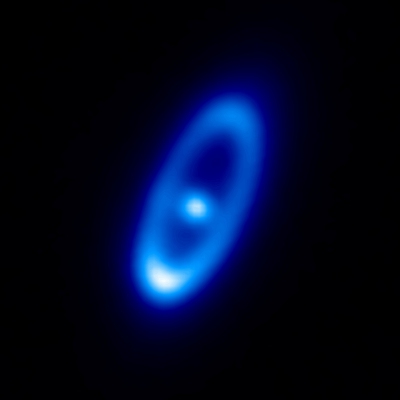The discovery of the first Kuiper Belt Object (KBO), in 1992 by Jane Luu and David Jewitt, has completely changed our view of the solar system. One of the most important consequence of this discovery is that it suggests a substantial rearragement of the solar system architecture. For example, many numerical models now address the formation and evolution of the solar system including planetary migrations, which have been identified with the existence of resonant objects in outer solar system. The discovery of the Kuiper Belt has also had an significant impact on the study of small body populations, since KBOs provide many connections with other populations. KBOs are now believed to be the parents of Centaurs, Jupiter Family Comets, some irregular satellites and possibly Jupiter Trojans.
Dynamical studies have highlighted possible links between small body populations, yet there is no compelling evidence that the solar system evolved according to any of the current scenarii. In order to test the different existing models of the solar system evolution, we need to constrain the physical characteristics of small bodies. In spite of an intense observational effort, there are still many things we don't understand about the physical connections between the different populations. Part of my work aims at constraining some of the physical properties of small bodies, in particular the surface composition, through visible and near-infrared spectroscopy performed on the world's largest telescopes. I am particularly interested in the volatile and organic content of KBOs, Centaurs, Trojans, comets and asteroids, and the similarities/differences between these populations.
The key aspect of my work is related to the thermal history of small bodies, remnants of planet formation. Strategically, understanding their origin and evolution is a key step towards explaining the processes at work during the formation and evolution of the solar system. But in order to do so, we have to understand which of their physical and orbital characteristics, after 4.5 Gyr of physico-dynamical evolution in a time-varying radiative and collisional environment, will provide the best clues to their origin. This is a very complex problem, involving various physical processes acting together at the same time. It can be addressed in suitable steps. For example, I try to understand with numerical simulations how ice can survive inside small bodies, what the internal structure could be after 4Gyr of evolution, why and how some objects display cometary activity, or how physical properties should vary with time under the effect of thermal processes like insolation or radiogenic heating.

Far-infrared image of a young nearby star, Fomalhaut, surrounded by a dusty belt. Debris disks such as this one are believed to be very similar to our own Kuiper Belt, where the dust is produced by collisional grinding of icy objects.
Acke et al. (2012) A&A, 540, A125
Obtained with PACS on the Herschel Space Observatory, courtesy ESA.
Collaborators
Colin Snodgrass - Open University
Stephen Lowry - University of Kent
Olivier Mousis - Laboratoire d'Astrophysique de Marseille
Pierre Vernazza - Laboratoire d'Astrophysique de Marseille
Sebastien Besse - European Space Agency - ESTEC
Audrey Delsanti - Laboratoire d'Astrophysique de Marseille
Philippe Rousselot - Institut UTINAM/Universite de Franche Comte
Pierre Ferruit - European Space Agency - ESTEC
Olivier Witasse - European Space Agency - ESTEC
David Jewitt - UCLA, IPlEx
Emmanuel Jehin - Universite de Liege
Cyrielle Opitom - Universite de Liege
Christophe Dumas - European Southern Observatory
Nuno Peixinho - University of Antofagasta
Pedro Lacerda - Max Planck Institute